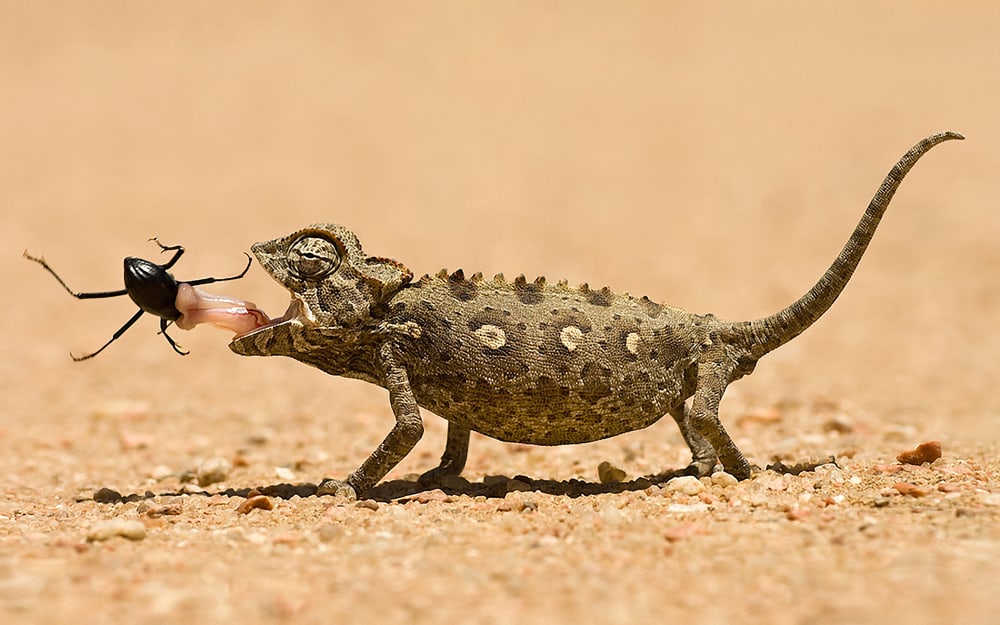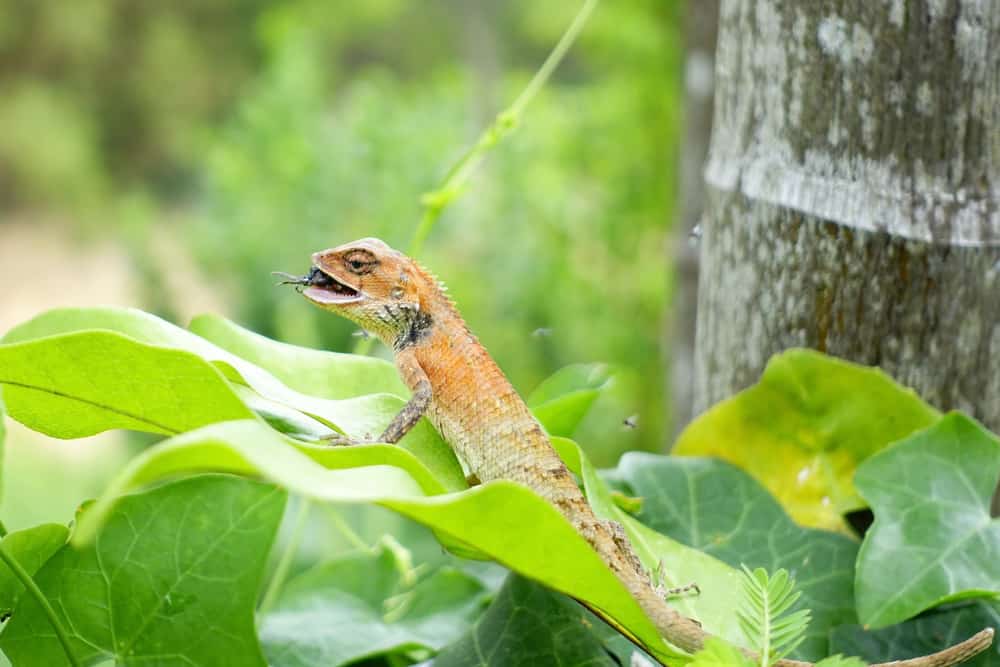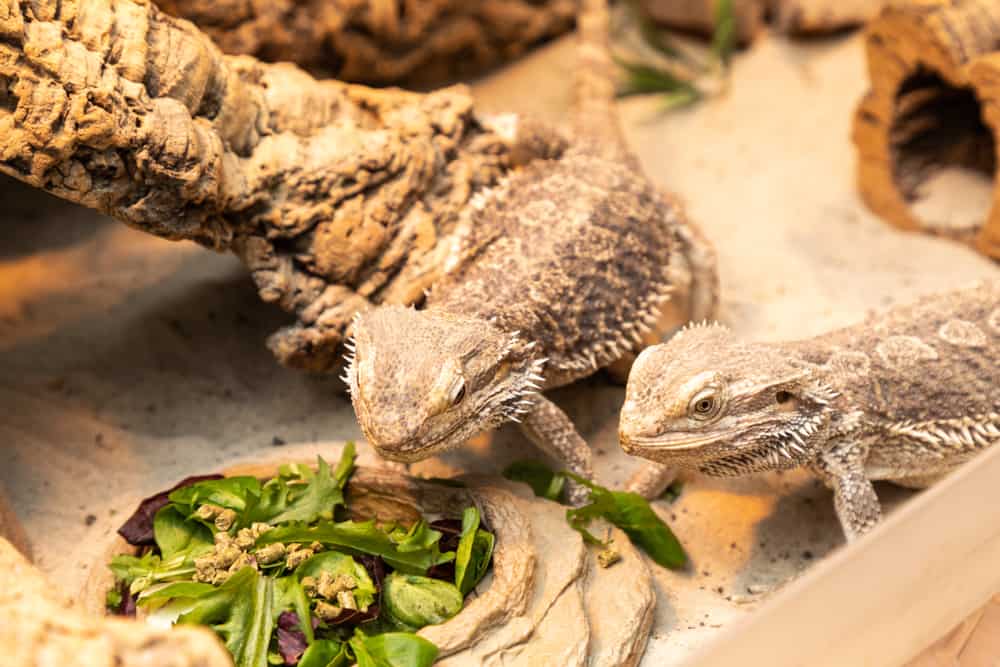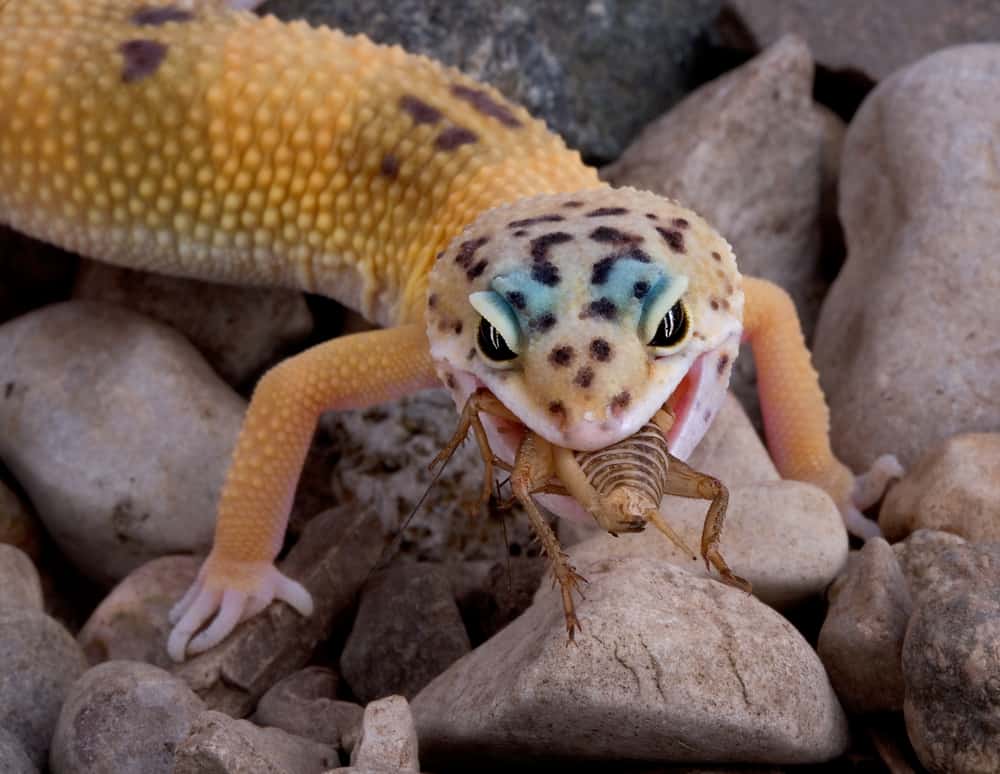If you have ever spent some time in the garden, you probably saw small green or brown reptiles there.
Lizards are standard inhabitants in parks and yards, but you can also keep them as pets after choosing between more than 4,675 different species. Feeding them is not complicated, so let’s see what do lizards eat.
Lizards Habits and Biology
Lizards are reptiles, a part of phylum Chordata (Vertebrates) like amphibians, fish, other reptiles, birds, and mammals. The primary categorization for lizards is whether they have legs or not.
Lizards with legs belong to the Glass lizard group, and those without legs belong to the Whiptail lizard group.
Lizards are reptiles divided into a variety of species. In fact, you can recognize over 4,675 different types worldwide. Some are smaller than a hand-size, such as a Gecko lizard found in 2001 that is only 0.6 inches (1.5 cm) long.
On the other side, there are Komodo lizards that find their perfect conditions on the Indonesian island. They can grow more than 10 feet (3 m) and weigh up to 200 pounds (91 kg).
Many reptiles, including lizards and snakes, are ectotherms. They can’t control their internal body temperature, but it depends on their surroundings. Therefore, many lizard species live in the desert and enjoy higher temperatures.
Most lizards are active for a short period during the year, and they spend most of the time hibernating. They come out of this state in late spring and go back to hibernation at the beginning of September. In other words, these animals are active for only 4 or 5 months, so they use that period to reproduce.
Do Lizards Eat Dirt?
Lizards are omnivorous, but that doesn’t mean they will always eat dirt. Well, sometimes they do, particularly when suffering from calcium deficit due to improper feeding.
Therefore, you should be careful with the quality of the ingredients you provide for your pet. Otherwise, your lizard will eat sand to compensate for the lack of essential minerals, which can harm its digestive system.
Sometimes, these reptiles catch some sand along with prey while trying to grab something to eat. However, you shouldn’t worry about that small amount. The problem comes when a lizard eats a larger quantity of dirt.
Finally, lizards bury themselves underground during the wintertime for their hibernation process. They can eat some dirt or sand while digging holes, but that won’t make a significant problem.
What Do Lizards Like to Eat Most
Lizards can eat everything from insects to fruits and vegetables, depending on their type. Herbivorous eat only plants and vegetables, while omnivorous eat meat, as well. Some species of smaller lizards are insectivores and only eat insects and worms.
Some more giant lizard species can be actual predators and eat huge mammals without a problem. As you can guess, those species are not common pets.
Lizards in the wild
Eating habits for lizards in the wild differ from species to species, but one thing is for sure. They will adapt their feeding habits to the environment and probably find something to eat in any surroundings.
Many lizards will find insects as their primary food source. However, they can be extravagant, as well. If they find themselves in the situation to find bird eggs, they will surely steal them.
Remember that lizards will typically choose their favorite insects based on their size. Almost every lizard can eat crickets, grasshoppers, locusts, and bugs similar to their size. On the other hand, consuming spiders and scorpions won’t be a popular option among smaller lizard species.
Some species eat foods grown from the ground, with little berries being their favorites. Lizards that live near the aquatic territories can sometimes eat algae, but only in small quantities.
Bigger lizards usually eat injured birds and other lizards. The biggest known lizard species is a Komodo dragon that can eat pigs, water buffalo, and even humans. Komodo dragons can eat up to 80% of their body weight a day. Since these reptiles can weigh up to 200 pounds (91 kg), they need to hunt a lot of meat daily.
Lizards as pets
You probably don’t plan to have the biggest lizard species in your home, so there is no need to worry about buying proper food for the Komodo dragon. The most popular lizards you can keep in your home as pets are usually smaller ones, like:
- Geckos
- Iguanas
- Chameleons
Your reptile pet will probably eat the same or similar food as it eats in the wild. Its feeding is not complex, and you can find proper ingredients practically everywhere. When living in captivity, your lizard won’t need to give its best to hunt its prey but will rely on you instead.
Therefore, you should find crickets and other common insects for your lizard in a local pet shop. They will surely be the primary food for your pet, but you can generally enhance with insects and worms you get yourself.
Giving different insects and worms to your lizard can make it feel like it is in its natural habitat. However, it is wise to check if insects you catch yourself are suitable for your lizard. The most common are:
- Fruit flies
- Dubia roaches
- Mealworms
Some bigger lizard species like to eat little mice sometimes. However, most exotic pet stores that sell food for exotic pets won’t sell live mice for feeding animals. So, you need to teach your lizard to eat frozen mice.
Most lizards enjoy eating fruits and vegetables, but be aware that greens and leafy products can’t replace protein sources.
Fruits and vegetables
Your lizard should eat fruits and vegetables in addition to its primary food source. Be careful since vegetables and fruits can make different impacts on your pet. Some are highly beneficial, while others can even be poisonous. A list of fruits and veggies your lizard can eat includes:
- Apples, peaches, and pears
- Strawberries and blueberries
- Bananas, papaya, and Figs
- Pineapples and kiwis
- Grape
- Honeydew melons and yellow squashes
- Dark green lettuce
- Collard greens, dandelion greens, and turnip greens
- Celery, spinach, and parsley
- Kales
- Tomatoes and bell peppers
- Sweet potatoes and carrots
Food Avoid to Feed Lizards
Lizards are mostly omnivorous, and they can eat a variety of food. Most insects and vegetables are safe for their organisms, but there is the food they shouldn’t eat at all, such as:
- Iceberg lettuce
- Onion and garlic
- Juniper and acorns
- Celery and eggplants
- Butterflies
- Caterpillars
- Ticks
- Fireflies
Avoid feeding your pet with insects that you catch yourself if you don’t know they are safe for consumption. Also, never give your lizard fruits and vegetables directly from your garden before washing them properly.
Feeding your lizard can sometimes be dangerous, so you shouldn’t offer it raw meat. It can be harmful since it can contain many bacteria and parasites. In fact, the meat you give to your pet should spend at least 30 days in a freezer before consumption.
Remember that your lizard is not in its natural habitat and doesn’t have developed hunting skills. Therefore, some live animals that you put in the cage can attack and hurt your pet. For instance, live rodents can scratch and bite your lizard while defending.
If your pet is insectivorous, you should avoid feeding it with spiders and scorpions because they are often poisonous. Fireflies are toxic as well, and a single one can kill a small reptile. The best option is to check with your vet what insects you can offer to your pet.
Tips to Feed Lizards
Once you decide to adopt a lizard, you need to follow some required procedures, such as:
- Always wash your hands before and after touching your pet
- It is necessary to provide enough insects to feed your lizard daily. Add some fruit and vegetables to provide enough vitamins, and your pet will be happy and healthy for long
- Offer your lizard healthy treats, like crickets or mealworms, at least once a week
- If your lizard suddenly rejects food, you should ask someone experienced about a probable reason and what to do in such a case
- If your reptile is sick or injured, you should call the vet
Things that are crucial for your lizard’s welfare include:
- Cage of proper size and adequate substrate, according to the lizard species
- It is necessary to put some wooden structures and rocks inside the cage to keep your pet interested and let it enjoy climbing
- A heat lamp for regulating cage temperature is a required piece of equipment. You also need a thermometer to check the temperature regularly
- A UV lighting is necessary to provide enough light for your pet
- Since your lizard needs water, especially if you have a species from rainy forests, you should add a water bowl of the appropriate size into the cage
Summary
Feeding the lizard and taking proper care of it is not hard. You only need to prepare its cage adequately and take care of healthy ingredients. Luckily, lizards usually find entertainment, so you don’t need to worry about that part.



